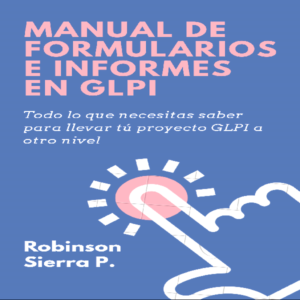This booklet answers the question: "What is Bio-identical hormone replacement therapy (BHRT)?" for those who are not quite ready to purchase our full-length book, Stay Young & Sexy by Jonathan Wright, MD.
Bio-identical hormone replacement therapy (BHRT) is a treatment to restore declining human hormone levels to those seen in healthy, 30-year-old women by supplementing with hormones bio-identical to human hormones, i.e., with exact molecular duplicates of the estrogens, progesterone, testosterone, and DHEA the human body itself produces.
If you have already reached an age at which your hormone levels have begun to wane (typically mid-40s to early-50s for women), you are likely to have begun noticing unwelcome changes not only in your menstrual cycles, but also in your skin, libido, mental acuity and general vitality.
You may also be experiencing some or all of the unpleasant symptoms of menopause, such as hot flashes, night sweats, and vaginal dryness, which can greatly diminish your joy in living.
Fortunately, you don’t have to put up with any of this!
BHRT can restore your former normal, healthy levels of hormones – whose lack is the cause of all these symptoms – and enable you to age vibrantly, not just valiantly.
Each prescription for BHRT is tailored to specifically meet your individual needs
After testing to determine what your current hormone levels are, and thus your specific requirements for supplementation, the human-identical sex hormones you now have in insufficient supply are provided for you.
And they are given in just the right doses to restore your hormone levels to those normally found in the lower range produced by healthy, 30-year-old women’s bodies.
BHRT copies Nature as closely as possible
In addition to using exact molecular copies of the hormones supplemented, and providing them in doses specifically calibrated after testing to meet your individual needs, BHRT administration further mimics Nature by providing administration instructions that copy the ebb and flow of estrogen and progesterone during a healthy 30-year-old woman’s natural monthly menstrual cycle. Thus, for women who had the “typical” 26 to 30 day cycle during their menstruating years, estrogen is used on days 1-25 of the cycle and progesterone is added during days 12-25. If testosterone is also found to be deficient, it is used day 1-25 along with estrogen. DHEA is used days 1-30 (or daily throughout the cycle). Days 26-30 are days off, when no estrogen, progesterone or testosterone is used. Day’s 26-30 mimic the days of menstruation (although with the low levels of hormones used in properly prescribed BHRT, having a “period” is unnecessary).
Nature is also mimicked by utilizing creams to deliver the hormones via topical application to areas of thin skin like the inner wrist and, preferably, the vaginal labia, the area of the skin’s surface where they are especially well absorbed and delivered directly into the same pelvic veins that the ovaries use to send these hormones into the general circulatory system.
Delivering the hormones transdermally rather than taking them orally as pills that are swallowed is also very important. Why? Hormones taken orally are immediately sent to the liver, the body’s screening and detoxification facility, where they are changed by the processing they undergo there before being released into the general circulation. Estrogen, for example, although typically prescribed in the form of estradiol, a weaker human estrogen, is likely to be converted in the liver into a more potent and potentially carcinogenic form called estrone or into pro-carcinogenic estrogen metabolites. When taken orally, estrogens have also been shown to increase risk for blood clots, insulin resistance and type 2 diabetes. Topical administration of estrogen has the exact opposite—and highly beneficial effects—of decreasing insulin resistance, improving blood sugar control, and decreasing risk of cardiovascular disease and diabetes
Bio-identical hormone replacement therapy (BHRT) is a treatment to restore declining human hormone levels to those seen in healthy, 30-year-old women by supplementing with hormones bio-identical to human hormones, i.e., with exact molecular duplicates of the estrogens, progesterone, testosterone, and DHEA the human body itself produces.
If you have already reached an age at which your hormone levels have begun to wane (typically mid-40s to early-50s for women), you are likely to have begun noticing unwelcome changes not only in your menstrual cycles, but also in your skin, libido, mental acuity and general vitality.
You may also be experiencing some or all of the unpleasant symptoms of menopause, such as hot flashes, night sweats, and vaginal dryness, which can greatly diminish your joy in living.
Fortunately, you don’t have to put up with any of this!
BHRT can restore your former normal, healthy levels of hormones – whose lack is the cause of all these symptoms – and enable you to age vibrantly, not just valiantly.
Each prescription for BHRT is tailored to specifically meet your individual needs
After testing to determine what your current hormone levels are, and thus your specific requirements for supplementation, the human-identical sex hormones you now have in insufficient supply are provided for you.
And they are given in just the right doses to restore your hormone levels to those normally found in the lower range produced by healthy, 30-year-old women’s bodies.
BHRT copies Nature as closely as possible
In addition to using exact molecular copies of the hormones supplemented, and providing them in doses specifically calibrated after testing to meet your individual needs, BHRT administration further mimics Nature by providing administration instructions that copy the ebb and flow of estrogen and progesterone during a healthy 30-year-old woman’s natural monthly menstrual cycle. Thus, for women who had the “typical” 26 to 30 day cycle during their menstruating years, estrogen is used on days 1-25 of the cycle and progesterone is added during days 12-25. If testosterone is also found to be deficient, it is used day 1-25 along with estrogen. DHEA is used days 1-30 (or daily throughout the cycle). Days 26-30 are days off, when no estrogen, progesterone or testosterone is used. Day’s 26-30 mimic the days of menstruation (although with the low levels of hormones used in properly prescribed BHRT, having a “period” is unnecessary).
Nature is also mimicked by utilizing creams to deliver the hormones via topical application to areas of thin skin like the inner wrist and, preferably, the vaginal labia, the area of the skin’s surface where they are especially well absorbed and delivered directly into the same pelvic veins that the ovaries use to send these hormones into the general circulatory system.
Delivering the hormones transdermally rather than taking them orally as pills that are swallowed is also very important. Why? Hormones taken orally are immediately sent to the liver, the body’s screening and detoxification facility, where they are changed by the processing they undergo there before being released into the general circulation. Estrogen, for example, although typically prescribed in the form of estradiol, a weaker human estrogen, is likely to be converted in the liver into a more potent and potentially carcinogenic form called estrone or into pro-carcinogenic estrogen metabolites. When taken orally, estrogens have also been shown to increase risk for blood clots, insulin resistance and type 2 diabetes. Topical administration of estrogen has the exact opposite—and highly beneficial effects—of decreasing insulin resistance, improving blood sugar control, and decreasing risk of cardiovascular disease and diabetes












